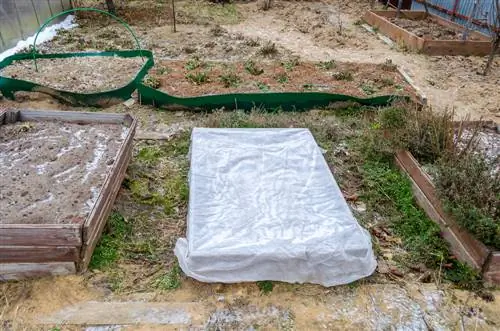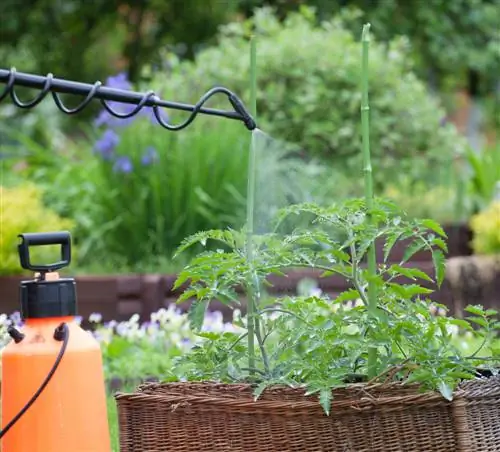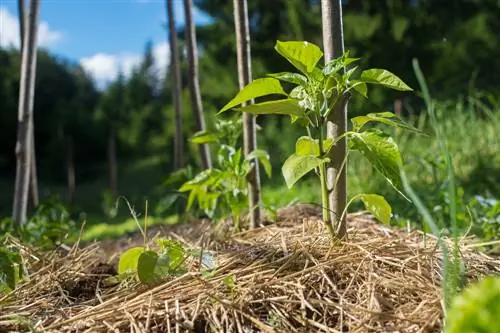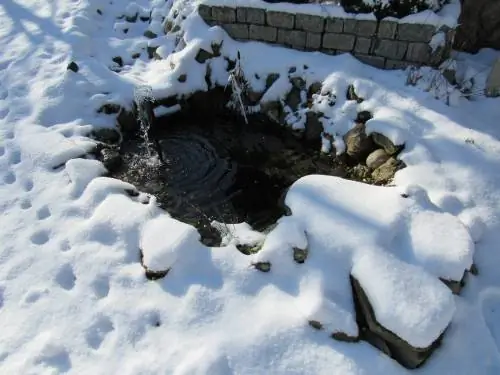- Author admin [email protected].
- Public 2023-12-16 16:46.
- Last modified 2025-01-23 11:21.
The gardening year is coming to an end. The last vegetable plants have been harvested and the time has come to store the garden furniture and equipment. Before that, however, it is important to prepare the vegetable patch for the cold season. It is important to pay attention to the nature of the soil, because loose soils require different treatment than heavy, loamy substrates. In this article we clarify:
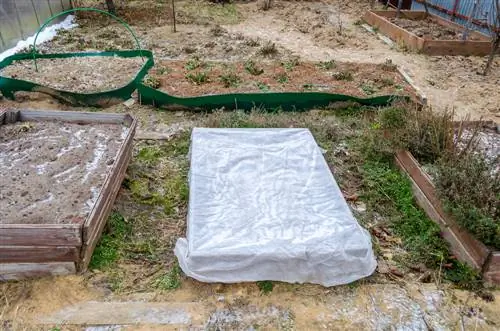
How do I prepare my vegetable patch for winter?
To make a vegetable bed winter-proof, loosen normal soil, dig up heavy soil, protect winter vegetables with garden fleece, fertilize with compost or green manure and finally cover the soil with a warming mulch layer made of straw or plant residues.
- Which soils loosened and
- which are being dug up.
- How to protect soil from erosion.
- How to protect vegetable plants like cabbage from excessive cold.
Which soils are only loosened up?
Normal soil that is finely crumbly and smells pleasantly of earth is loosened up with a digging fork. You can save yourself the hassle of digging, which really messes up the soil structure. Remove weeds and roots carefully so that these unwanted plants do not sprout before the vegetables in spring.
For fertilization, it is recommended to incorporate some ripe compost or manure into the top layer of soil. Alternatively, you can add green manure. The covering plants provide the soil organisms with food and act like a warming, protective blanket in the event of frost.
Digging heavy soils
To ensure sufficient ventilation in clayey soils, they are dug to the depth of a spade. Here too, carefully select weeds; Plant residues from the vegetable plants, on the other hand, are chopped under. It is recommended to improve the soil structure by incorporating some sand and fully ripe compost.
Protect winter vegetables
When the first night frosts threaten, the vegetable patch is almost harvested. You can only leave hardy vegetables such as Brussels sprouts or leeks. Cabbage in particular should be exposed to cold because it tastes much more aromatic afterwards.
If the temperatures drop sharply in very harsh locations, you should cover these plants with a garden fleece (€6.00 at Amazon). Protected in this way, you can rely on vitamins from your own vegetable patch even in winter.
Apply a warming layer of mulch
The final work in the vegetable patch is distributing warm blankets made of protective and nourishing material. This imitates natural processes: If the leaves fall from the trees, they remain on the ground and protect the soil. Green manure plants or a layer of straw are well suited.
Tip
In some areas where there is little snow, the mulch is often carried away by the wind. To prevent this from happening, you can also cover the vegetable patch with a net that you weigh down on the side with large stones.

